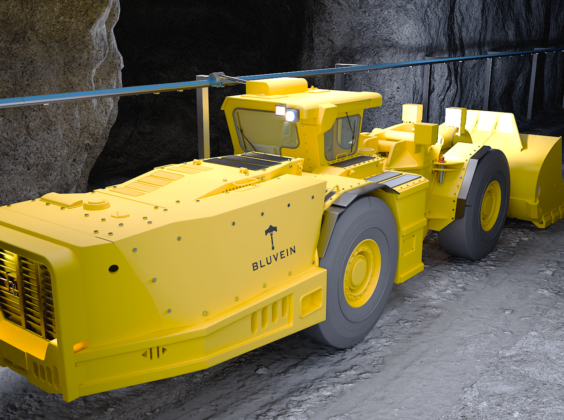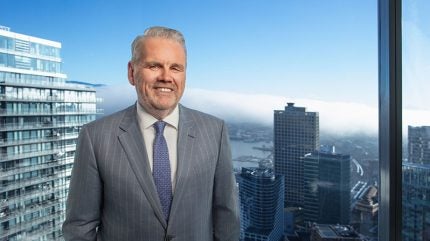“We’re not just about mining – we’re about pushing boundaries and creating a sustainable future for the industry by thinking big and driving change.”
This is a statement from the MasterMined Innovation website; a site that is littered with logos from some of the biggest mining companies in the world and has a number of operational shots of Tony Sprague, CEO and Founder of the company, that indicates he could fit his SCSR to his belt in under a minute.
Sprague, a mining technology advocate who has worked all over the globe and in operational and headquarter-based roles, has been driving change in this sector for some time.
During his time at Newcrest Mining (now owned by Newmont), he helped progress several technologies through the technology readiness level stage gates and was not afraid to be a first mover when it came to applying new innovation at the company’s sites.
“I have always had a penchant for innovation and fixing problems and wanting to change the industry for the better – and there is a lot to be done on that front,” Sprague tells IM close to the MasterMined’s first-year anniversary as a company. “That’s effectively how MasterMined was formed.”
To this point, Sprague’s capabilities have been leveraged across the likes of BHP, Vale, Newmont and Rio Tinto on the mining company roster.
“Some of this revolves around what I would call ‘mine transformation uplift’ programs, where others have involved troubleshooting technical support, strategic value uplift studies, as well as more conventional expert advisory tasks,” he says.
MasterMined is also supporting BluVein to progress its next-generation dynamic trolley technology (BluVein1 and BluVeinXL), which it sees as critical to the achievement of highly-efficient electrified mining operations for both open-pit and underground mining.

Sprague’s experience, plus the ability to interact with both mining companies and technology vendors, is allowing him to broker conversations that might not take place without his involvement.
“MasterMined is being perceived as not your traditional mining consultant,” he said. “We have the technical understanding of mining right down to the face, in both surface and underground, as well as the experience of what it takes to bring an investment to board level.”
Sprague also has a large phone book of experts to call on for specific projects that require a heightened level of technical excellence. “If a client was to come to me and ask for assistance on charge-up operations in thermally-active ground, I know the right people to go to; I can assemble a team in short order and carry this out,” he said. “Likewise, we have a number of projects we are working on in caving – something I have extensive experience in from Newcrest.
“In either of these scenarios, I am happy acting as a consultant for this project and advising the client on the best experts to choose from to progress these projects forward.”
A consultant that knows the business and knows how to ‘sell’ something to the mining boardroom is a rarity.
“If we look at some of these multi-billion-dollar mine design projects we’re involved in, there’s an element where these have stalled because they’ve been left to the big consultants to progress,” Sprague said. “By using our mining knowhow and unending thirst for finding value, we’re able to set them off on the best trajectory.”
In this context, Sprague is keen to a play a role in accelerating projects through the development pipeline, carrying out peer reviews or study assessments to ensure no value is left behind and the design has been futureproofed.
Take electrification as an example here.
Sprague says: “There’s a big desire for electrification; it’s just no one really knows how to do it yet. As a result, everyone’s still happy to go and first buy diesel fleets, but the problem with this approach is you then set the mine up as a diesel system, and then you end up having major problems redesigning it for charge bays and increased power loads.
“The second issue with that is you’ve likely designed the mine around loaders, which might not be the best fleet choice in all situations. We call it an LHD – load, haul, dump – for a reason. There should roughly be a 1:1:1 ratio between the three, but most of these machines today are in use for most of the shift as haulage vehicles due to crushers having moved further away from the drawpoints.
“In this scenario, someone needs to stand back and say, ‘Hang on a minute, let’s actually do the numbers and the analysis. Are there better ways we can do this that, one, delivers productivity uplifts along with capex and opex reductions, and, two, eases the inevitable transition towards fully-electric operation?’”
Sprague is more than happy to take this perspective on for clients, and the mining community appears to be more receptive to hearing it given his background.
“MasterMined, for whatever reason, has been given an opportunity to be a bit different from the large consultants,” he said. “We’re much more on the client side, plus we work with internal tech and innovation teams and, in some regards, do stuff that even some of those mining company teams may not be able to do.
“We’re connected to operations and get to cook up actual solutions that deliver today.
“I am excited for what 2025 has in store for MasterMined and our clients!”




